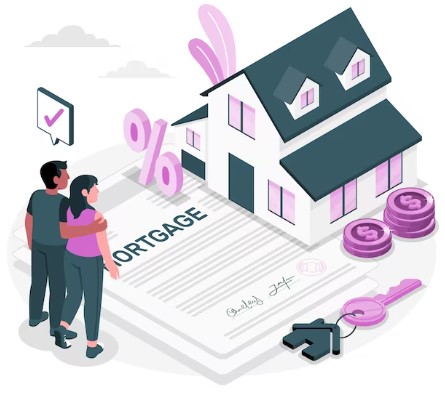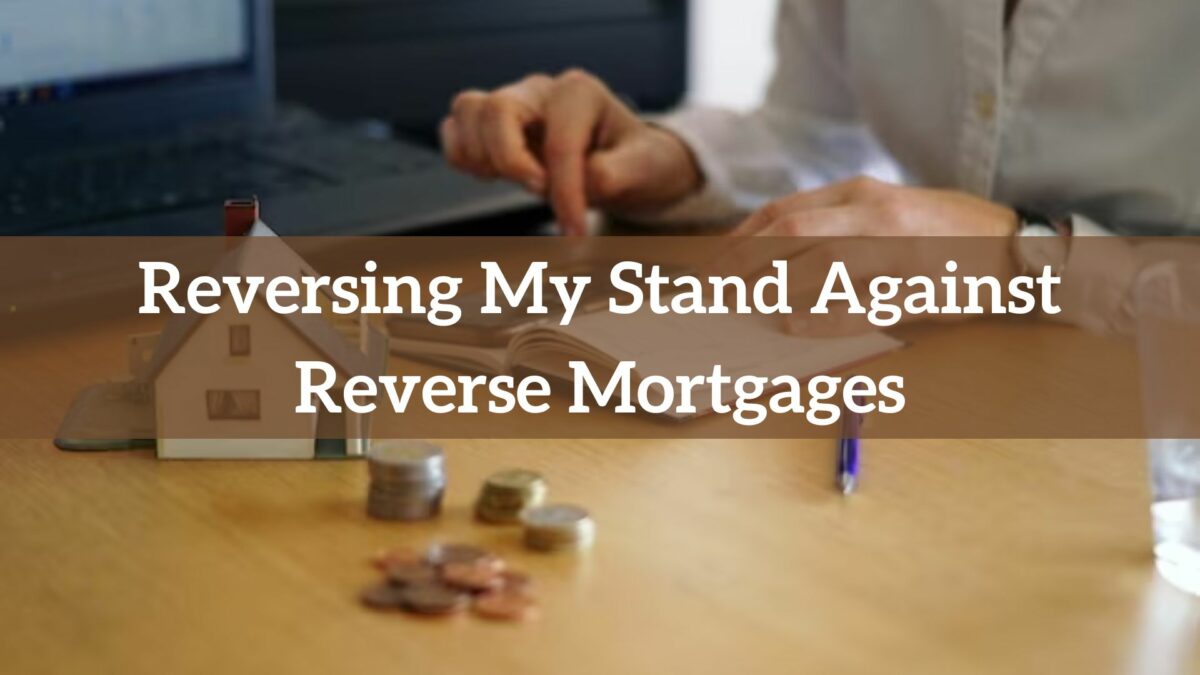“I’m willing to admit that I may not always be right, but I am never wrong.”
–Samuel Goldwyn
When I started out in financial planning, I had a pretty solid line about debt and on which side of it I stood. After all, I am a proponent of the there is no such thing as “good debt” credo. While I railed against Justin Bieber pimping promoting a prepaid debit card, I also threw in some good jabs at Fred Thompson and Henry Winkler for promoting reverse mortgages.
Recently, a combination of a new program from HUD (whoo! The government encouraging you to borrow money!) and research from Drs. Sacks and Sacks – academics, not a law firm ready to help you out if you’ve been injured in an auto accident – has caused me to change my tune a little bit.
Reverse mortgages may not be the demon that I made them out to be. They’re not a panacea, and they’re certainly not a substitute for making sure that you have enough in your retirement savings and investments to fund your lifestyle needs, but, for those retirees and soon-to-be retirees who are not quite there with what they need to have, a reverse mortgage may actually be appropriate.
Yeah. It’s hard to type that. I’m still in the old mindset of REVERSE MORTGAGE BAD despite seeing evidence to the contrary. This isn’t surprising. According to neuroscientist Dr. Joe Tsien, the older we get, the harder it is for us to get rid of useless information. Put another way, Monkey Brain gets set in his ways. It’s time to rattle Monkey Brain’s cage.
First off, let’s examine reverse mortgages and the type which I think is correct to use for the scenarios in which it’s correct to use them. Then, we’ll evaluate the causes of why reverse mortgages actually work, including real options, safe withdrawal rates, and Einstein’s favorite, compounding interest. Finally, we’ll look at scenarios where I think it may be correct to use a reverse mortgage and how to use it.
My EN102 professor, LTC Gruner, would have been so proud of that introductory paragraph. Tell ‘em what you’re gonna tell ‘em, tell ‘em, and then tell ‘em what you told ‘em.
What is a reverse mortgage?

In simple terms, a reverse mortgage is where the bank slowly pays you for the rights to own your home. The bank gives you a stream of payments for as long as you’re living in the home, and after each payment, interest accrues. At the end, when you’re no longer living in the home – whether because you had to move to an assisted living facility or you peeled the garlic – the bank can use the home as the collateral against the loan and claim it unless you or your estate pays the balance on the mortgage.
The term that the government uses is a Home Equity Conversion Mortgage (HECM) – the government loves acronyms. To qualify, you need to be living in a single family home, condo, or mobile home, or you need to be the owner-occupant of a 2-4 unit home. You also need to have little to no mortgage on the home, since the idea is that you’re using the equity built up in your home in order to fund cash flow requirements. If you’re using the reverse mortgage to pay off your existing mortgages, then you’re not going to get as good of a deal out of the reverse mortgage. You also need to continue to maintain the house, keep insurance on it, and pay your property taxes. This helps to ensure that there’s a worthwhile house available for the bank when you’re no longer occupying it. Finally, there’s a little age discrimination going on. You have to be at least 62 years old to qualify for one.
Why Are Reverse Mortgages Viable?

My biggest fear with people getting a reverse mortgage is that they hand Monkey Brain the checkbook, draw every last penny out, have an amazing bender in Monaco, and come back having blown a significant proportion of potential liquidity that they have.
However, there’s nothing which prevents someone over the age of 59 ½ from doing the same thing with the IRA or the 401k (55 in the case of a 401k) and not have to pay a penalty.
If you were disciplined enough to get to the point where you have little or no mortgage on your house, then you’re probably disciplined enough not to have a reenactment of The Hangover and wonder where all of your money went. Profligacy and no mortgage are usually terms not associated with each other.
Here’s where the appropriate use of a reverse mortgage is useful.
Real Options

As I’ve previously discussed at great length, I’m a big fan of real options. Opening up a reverse mortgage line of credit – a HECM LOC (whoa acronyms) – enables you to tap into a cash source if you find that you need it. We’ll discuss the mechanics of how to use this in a moment. The difference between the HECM LOC and a normal home equity line of credit is that the HECM LOC is guaranteed and can’t be cancelled. Home equity LOC holders found out far too often during the financial crisis that the banks were calling the LOCs on them or closing them out. Furthermore, once you open up a home equity LOC, you have to start paying it back. You don’t with a HECM LOC.
People use home equity lines of credit to spend cash that they don’t have. The strategy with a HECM LOC is to spend money to save you from having to sell equities when they are devalued. We’ll explain this in a minute. With a home equity line of credit, your line of credit is fixed. A HECM LOC can potentially grow over time because of an accrual rate on the line of credit. It’s basically interest on the portion of the line of credit which you don’t use. Furthermore, if you borrow more money against a HELOC than your house is worth, the lender can come after other assets if you’re in a recourse loan. HECM LOCs are non-recourse loans, meaning that the house is the only asset the bank can come after, no matter how large the loan or how worthless the house when you leave (even if you’re leaving feet first).
Let’s see why having access to that cash makes sense.
How Reverse Mortgages Affect Safe Withdrawal Rates

Once you’re in retirement, you’re going to have to live off of your assets for the remainder of your time on this planet, unless you plan on becoming a professional WalMart greeter. In an ideal world, you’ll have enough invested so that the dividends and interest provide you with more than enough to live on, and you never have to tap into your principal. Your investments keep growing until you slip the surly bonds of earth.
Most people don’t reach that financial nirvana, so they have to take some risk and tap into the principal.
In a bull market, this isn’t a big deal. You’re selling high and hardly making a dent in your assets while paying for those hammocks and great knee-high socks. However, in a bear market, you’re taking a big hit. You’re selling assets when they’re down, and you have to recover just that much more to get back to where you were.
Some people solve this problem by buying annuities. Monkey Brain doesn’t like annuities because of the loss of control and the worry that you’ll die the day after you buy the annuities and then you’ll really regret it (you’ll be dead, so you won’t, but that’s what he argues).
There’s another way to avoid selling low.
Use the HECM LOC.
If the market is down when it’s time to withdraw some money for living expenses, then you are able to keep your retirement money invested in assets, giving them a chance to recover. When the market recovers and you’re above water again, you can sell the assets to pay back the line of credit and reset your cushion.
The same applies to selling your house when it’s underwater and you have to move. Rent it out instead!
Thus, you’re able to use the HECM LOC to reduce the times when you have to tap into your investments when the market is down.
There’s another approach to using a HECM LOC that leverages Einstein’s favorite power.
Reverse Mortgages Leverage the Power of Compounding

The biggest financial disaster scenario facing any retiree is the market tanking early in retirement. The retiree’s expenses haven’t changed, but the ammunition that he has to take care of those expenses is hamstrung.
Let’s look at a brief example to see why this is the case.
Let’s say Bob needs $40,000 a year to live on. He has $1 million (insert Dr. Evil laugh here) dollars. According to most financial planners, he’s at his safe withdrawal rate of 4%.
However, in year 1, the market tanks and goes down 20%. Bob still has to take out that $40,000.
$800,000 (new market value) minus $40,000 (Bob’s living expenses) = $760,000
To get back to the original value, Bob’s investments have to go up 31.58%. That’s going to take some time.
What if Bob didn’t have to take out that $40,000?
His investments would only have to go up 26.32% to get back to his original amount. He’s bought himself some wiggle room. Granted, he’s still probably sweating bullets, but they might be .45s instead of .50 caliber bullets.
The HECM LOC allows Bob to keep his money invested in assets and give them more time to grow (or recover) without constantly dipping into the principal.
If Bob can meet several years of spending by using the HECM LOC, then he’s allowing his retirement nest egg more time to potentially grow with the markets before he has to start withdrawing it.
Which Method Do I Prefer?

The research previously cited from Drs. Sacks and Sacks shows a slight mathematical preference for the approach of tapping into a HECM only when a person’s retirement assets are below what they are expected to be for a given age, and then repaying the HECM when the assets have recovered their value.
Sometimes, though, mathematics don’t pay off. If, after all, we were completely rational and mathematical human beings, we’d never be in debt in the first place!
My biggest concern with this approach is that it requires some reasonably astute math capabilities – namely, understanding where your investments are as compared with where they are supposed to be at your given age – out of an age group which, as Dr. Timothy Salthouse of the University of Virginia has demonstrated, starts to suffer from cognitive decline, particularly in understanding basic math. I know that I, for one, don’t want to be dealing with trying to figure out where I should be pulling money from when I’m a ninetysomething year old.
Therefore, I’m more of a fan of using up the HECM LOC in the early years to reduce the number of difficult investing decisions you have to make as you get older. If you have a younger conservator who is savvy and understands the math behind the alternative process, then go with the mathematically correct version, but if you don’t, then take the easy way out. The difference isn’t significant enough for you to be risking much greater amounts of money by making a mistake.
Who Are Reverse Mortgages Appropriate For?

They’re not for everyone. Despite what Henry Winkler says, they have their time and place in the right situation.
Here’s a set of instances where they’re something you should look at incorporating into your financial plan:
- You don’t have quite enough saved up to live on. This is the obvious one. If you’re going to be just a touch short of where you need to be with your savings and investments, then a HECM accomplishes two goals for you:
- Buys time for your retirement fund to grow.
- Shortens the lifespan you’ll require the nest egg to support you.
- You’re retiring in a declining stock market. Almost every retiree who faced running out of money before running out of heartbeats did so when the first few years of retirement decimated their retirement portfolio. If the market is down, you don’t want to be withdrawing from your retirement funds, so the HECM LOC makes a great “retirement emergency fund” for you to tap into while giving the market time to recover.
- You have enough in assets, enough income stream, or enough long-term care insurance to cover assisted living, a nursing home, or other long-term care arrangements. There’s no point in tapping into your home equity and depleting it if you’re going to wind up in dire straits if your health declines and you need assistance for the activities of daily living (ADLs – another government acronym!). If you plan on leaving your home feet first, you can probably ignore this one, as you’d get home nursing and hospice care.
- Your house is going to depreciate in real value over time. We’ve recently seen that real estate doesn’t always go up. M.I.T. professor Robert Shiller recently stated that the inflation-adjusted return of real estate is close to 0%, and not everybody is average, so there’s a decent possibility your house will decline in real value over time. As our friends at Control Your Cash say, sell liabilities and buy assets. Getting a HECM LOC on a house which will go down in value over time is a perfect example of selling a liability.
Want to know how much you could get in a reverse mortgages? HUD has a nifty little calculator to figure out how much you could get. Ideally, you’ll get a HECM Saver plan because the origination fee is 0.01% as opposed to a HECM Standard plan, which has an origination fee of 2%. The amount you can borrow under a plan is a factor of how much equity you have multiplied by the appropriate principal limit factor (PLF…yay! more government acronyms!), which you can find here.
I’ve scratched the surface of the strategies and the tactics of determining if a reverse mortgage will work for you, and if it does, how to best leverage it. You need to know things like your glide path, your personal safe withdrawal rate, and many other factors before you can make a truly informed decision.
Author Profile
- John Davis is a nationally recognized expert on credit reporting, credit scoring, and identity theft. He has written four books about his expertise in the field and has been featured extensively in numerous media outlets such as The Wall Street Journal, The Washington Post, CNN, CBS News, CNBC, Fox Business, and many more. With over 20 years of experience helping consumers understand their credit and identity protection rights, John is passionate about empowering people to take control of their finances. He works with financial institutions to develop consumer-friendly policies that promote financial literacy and responsible borrowing habits.
Latest entries
 Low Income GrantsSeptember 25, 2023How to Get a Free Government Phone: A Step-by-Step Guide
Low Income GrantsSeptember 25, 2023How to Get a Free Government Phone: A Step-by-Step Guide Low Income GrantsSeptember 25, 2023Dental Charities That Help With Dental Costs
Low Income GrantsSeptember 25, 2023Dental Charities That Help With Dental Costs Low Income GrantsSeptember 25, 2023Low-Cost Hearing Aids for Seniors: A Comprehensive Guide
Low Income GrantsSeptember 25, 2023Low-Cost Hearing Aids for Seniors: A Comprehensive Guide Low Income GrantsSeptember 25, 2023Second Chance Apartments that Accept Evictions: A Comprehensive Guide
Low Income GrantsSeptember 25, 2023Second Chance Apartments that Accept Evictions: A Comprehensive Guide

